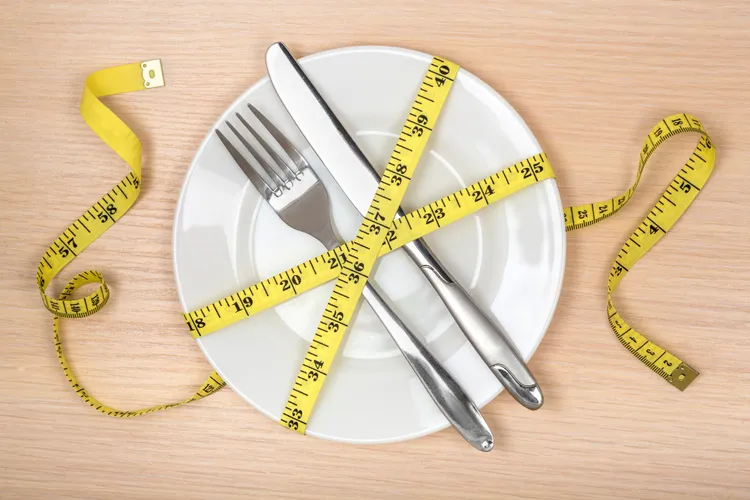How to Set a Calorie Deficit: A Guide to Sustainable Weight Loss
Losing weight often comes down to one fundamental principle: creating a calorie deficit, where you burn more calories than you consume. While the concept sounds simple, implementing a calorie deficit effectively requires a balance of science, strategy, and lifestyle adjustments to ensure it’s sustainable, healthy, and tailored to your needs. Whether your goal is to shed a few pounds, improve your health, or boost your confidence, understanding how to set a calorie deficit properly is key to success without compromising your well-being. We’ll explore what a calorie deficit is, why it works, and how to set one up in a way that’s practical, safe, and effective. We’ll cover the science of energy balance, tools for calculating your deficit, tips for managing hunger, and strategies to maintain muscle mass and energy levels. Plus, we’ll address common pitfalls and provide actionable steps to make your calorie deficit journey enjoyable and sustainable.

What Is a Calorie Deficit?
A calorie deficit occurs when you consume fewer calories than your body needs to maintain its current weight, prompting it to use stored energy (primarily fat) for fuel. This energy imbalance is the cornerstone of weight loss, as it forces your body to tap into fat reserves to meet its energy demands.
The Science of Energy Balance
Your body’s energy balance is governed by the equation:
Calories In (food and drink) - Calories Out (metabolism, activity, digestion) = Energy Balance
- Calories In: The energy you get from food and beverages, measured in calories (1 gram of carbs or protein = 4 calories; 1 gram of fat = 9 calories; alcohol = 7 calories per gram).
- Calories Out: The energy your body burns through:
- Basal Metabolic Rate (BMR): The calories burned at rest for basic functions like breathing and circulation (60–75% of total calories burned).
- Physical Activity: Exercise and non-exercise activity (e.g., walking, fidgeting) (15–30% of calories).
- Thermic Effect of Food (TEF): Energy used to digest food (5–10% of calories).
- Thermoregulation: Minor calorie burn to maintain body temperature.
When calories in are less than calories out, you create a calorie deficit, leading to weight loss. Conversely, a calorie surplus (more calories in than out) leads to weight gain, and balance maintains weight.
Why a Calorie Deficit Works
To lose 1 pound of fat, you need to create a deficit of approximately 3,500 calories, as 1 pound of fat stores about 3,500 calories of energy. A daily deficit of 500 calories could lead to 1 pound of weight loss per week (500 x 7 = 3,500). This can be achieved by eating less, moving more, or a combination of both.
Why Set a Calorie Deficit?
A calorie deficit is the most reliable way to lose weight, but it’s not just about aesthetics. Here are the key benefits:
- Sustainable Weight Loss: A moderate deficit promotes gradual fat loss while preserving muscle mass, unlike crash diets.
- Improved Health: Losing excess weight can reduce the risk of heart disease, type 2 diabetes, and joint issues.
- Better Energy and Mood: A balanced deficit with nutrient-dense foods maintains energy and supports mental clarity.
- Customizable: You can adjust the deficit to fit your lifestyle, goals, and activity level.
- Flexibility: Unlike restrictive diets, a calorie deficit allows you to enjoy a variety of foods in moderation.
However, an overly aggressive deficit can lead to hunger, fatigue, muscle loss, and nutrient deficiencies, so it’s crucial to set it correctly.
How to Create a Calorie Deficit
You can achieve a calorie deficit through diet, exercise, or both. Here’s how to approach each method:
- Reducing Calories Through Diet
- Choose Nutrient-Dense Foods: Focus on foods high in protein, fiber, and healthy fats to stay full on fewer calories. Examples: vegetables, lean meats, whole grains, and avocados.
- Control Portions: Use smaller plates, measure portions with a food scale, or follow serving size guidelines (e.g., ½ cup cooked grains = 1 serving).
- Limit High-Calorie, Low-Nutrient Foods: Reduce sugary drinks, desserts, and fried foods, which add calories without satiety.
- Example: Swap a 300-calorie soda for water and replace a 500-calorie pastry with a 150-calorie apple with 1 tbsp peanut butter.
- Increasing Calories Burned Through Exercise
- Cardio: Activities like running, cycling, or swimming burn 200–600 calories per hour, depending on intensity.
- Strength Training: Builds muscle, which increases BMR over time (muscle burns ~6–10 calories/pound/day vs. fat’s ~2–3 calories/pound).
- Non-Exercise Activity Thermogenesis (NEAT): Increase daily movement with walking, standing desks, or household chores.
- Example: A 30-minute jog (300 calories burned) plus cutting 200 calories from meals creates a 500-calorie deficit.
- Combining Diet and Exercise
- Why It Works: Combining both allows a smaller dietary reduction, making it easier to stick to while maintaining energy for workouts.
- Example: Cut 250 calories from food (e.g., skip a sugary coffee) and burn 250 calories through a brisk walk for a 500-calorie deficit.
Tip: Aim for a 70/30 split (70% diet, 30% exercise) for most people, as diet is easier to control than exercise calorie burn.
10 Practical Tips for Setting and Maintaining a Calorie Deficit
To make your calorie deficit sustainable and effective, follow these tips:
- Prioritize Protein
- Why: Protein preserves muscle mass, boosts satiety, and has a high thermic effect (burns more calories during digestion).
- How: Aim for 0.7–1 gram of protein per pound of lean body mass (or 1.6–2.2 grams/kg body weight). Include chicken, fish, eggs, tofu, or Greek yogurt.
- Example: Add grilled salmon (25g protein) to lunch or a protein shake post-workout.
- Fill Up on Fiber
- Why: High-fiber foods (vegetables, fruits, whole grains, legumes) are low in calories but high in volume, reducing hunger.
- How: Aim for 25–38 grams of fiber daily. Fill half your plate with non-starchy veggies like broccoli or spinach.
- Example: Make a chickpea salad with cucumbers, tomatoes, and spinach for a fiber-packed lunch.
- Eat Balanced Meals
- Why: Combining protein, healthy fats, and complex carbs stabilizes blood sugar and prevents cravings.
- How: Structure meals with 25–30% protein, 20–30% fats, and 40–50% carbs (mostly complex).
- Example: Quinoa bowl with grilled chicken, avocado, and roasted vegetables.
- Plan and Prep Meals
- Why: Planning prevents impulsive, high-calorie choices.
- How: Batch-cook meals weekly, pre-portion snacks, and keep healthy options (e.g., cut veggies, boiled eggs) ready.
- Example: Prep overnight oats with fruit and nuts for quick breakfasts.
- Stay Hydrated
- Why: Water reduces hunger and supports metabolism. Thirst is often mistaken for hunger.
- How: Drink 8–12 cups of water daily, more if active. Sip water before meals to curb overeating.
- Example: Carry a reusable water bottle and infuse with lemon or mint for flavor.
- Track Progress, Not Perfection
- Why: Consistency beats perfection. Small deviations won’t derail your deficit if you stay on track overall.
- How: Log food 5–6 days a week, allowing flexibility for social events. Weigh yourself weekly, not daily, to track trends.
- Example: Use an app to log meals but enjoy a restaurant meal guilt-free once a week.
- Incorporate Strength Training
- Why: Strength training preserves muscle, which maintains your BMR and improves body composition.
- How: Lift weights or do bodyweight exercises (e.g., squats, push-ups) 2–4 times per week.
- Example: Follow a beginner strength program or bodyweight circuits.
- Manage Hunger with Timing
- Why: Meal timing can reduce hunger and improve adherence.
- How: Eat every 3–4 hours or try time-restricted eating (e.g., 8-hour eating window) if it suits you.
- Example: Have breakfast at 8 AM, lunch at 12 PM, a snack at 3 PM, and dinner at 6 PM.
- Get Enough Sleep
- Why: Sleep deprivation increases hunger hormones (ghrelin) and reduces satiety hormones (leptin), making deficits harder.
- How: Aim for 7–9 hours of sleep nightly. Create a bedtime routine to improve sleep quality.
- Example: Avoid screens an hour before bed and keep your bedroom cool and dark.
- Adjust as You Progress
- Why: As you lose weight, your TDEE decreases, requiring recalibration of your deficit.
- How: Recalculate TDEE every 5–10 pounds lost or every 4–6 weeks. Adjust calories or activity to maintain the deficit.
- Example: If your TDEE drops from 2,200 to 2,000 calories, reduce intake to 1,500 calories for a 500-calorie deficit.
Common Pitfalls and How to Avoid Them
- Pitfall: Too Large a Deficit
- Risk: Leads to hunger, fatigue, muscle loss, and slowed metabolism.
- Solution: Stick to a 250–750 calorie deficit and consult a doctor for larger deficits.
- Pitfall: Ignoring Nutrient Quality
- Risk: Eating low-nutrient, high-calorie foods (e.g., chips) leaves you hungry and deficient.
- Solution: Prioritize whole foods like vegetables, lean proteins, and whole grains.
- Pitfall: Overestimating Exercise Calories
- Risk: Assuming you burn more calories than you do, negating your deficit.
- Solution: Use reliable trackers (e.g., Fitbit) or focus on diet for the deficit.
- Pitfall: Crash Dieting
- Risk: Extreme deficits lead to unsustainable weight loss and rebound gain.
- Solution: Aim for 0.5–2 pounds of loss per week and include refeed days (eating at maintenance) periodically.
- Pitfall: Neglecting Lifestyle Factors
- Risk: Stress, poor sleep, or low activity sabotage adherence.
- Solution: Combine diet with exercise, sleep, and stress management (e.g., meditation).
Long-Term Considerations
- Plateaus: Weight loss may slow as your metabolism adapts. Adjust your deficit or increase activity to keep progressing.
- Maintenance: Once you reach your goal, gradually increase calories to your new TDEE to maintain weight.
- Health First: Focus on non-scale victories like improved energy, better sleep, or stronger muscles, not just weight loss.
- Sustainability: Choose a deficit you can maintain long-term without feeling deprived. Incorporate favorite foods in moderation.
Setting a calorie deficit is a proven, science-backed method for weight loss, but it’s not about starving yourself or cutting out entire food groups. By calculating your TDEE, choosing a moderate deficit, and prioritizing nutrient-dense foods, you can lose fat sustainably while maintaining energy, muscle, and health. Combine dietary changes with exercise, sleep, and stress management for the best results, and adjust your approach as your body changes.
Start small - track your intake for a week, swap one high-calorie food for a nutrient-dense alternative, or add a daily walk. Over time, these habits will build a healthier, leaner you. A calorie deficit isn’t just about eating less; it’s about eating smarter to fuel your body and achieve your goals.









